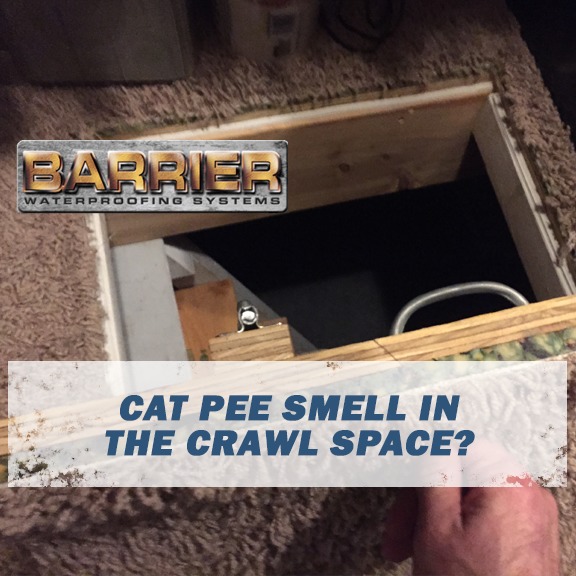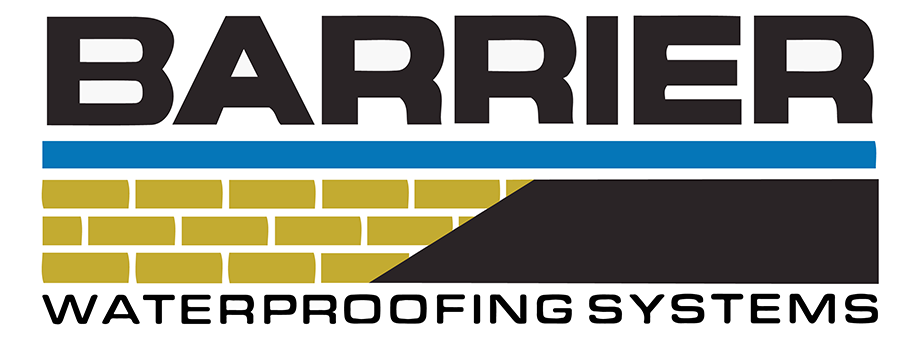In an effort to confuse homeowners, a certain self-described “ninja” has been proclaiming misinformation about problems that can occur within a poorly managed and maintained crawl space. One such claim says that a cat pee smell coming from the crawl space of your home is due to the breakdown of reinforced liners that then allow the polyester fibers to become wet and cause them to off-gas. There is no supporting evidence of this being true. This simply appears as an effort to sway, to influence in their favor, and to persuade consumers to choose the Ninja company for their crawl space services.
The odor actually originates from the decomposition of organic material in the soil under the home. This can be compounded by elevated moisture levels in the soil that occur post encapsulation. Once a space is encapsulated, the evaporation of moisture from the soil is greatly reduced. This can result in an increase in moisture which can then reactivate dormant microorganisms that then break down organic material at an accelerated rate—that’s why a crawl space that may not have smelled before the encapsulation may start to smell.
The ammonia released in this process is what creates the cat pee smell. This is because cat pee contains ammonia, the substance that creates the significant smell we associate with cat pee. When organic matter breaks down in the soil, the microorganisms decompose the organic matter back into more basic components. As a result of this process, ammonia is released in high pH soils and less toxic Ammonium in lower pH soils.
This smell comes into the house through the stack effect. The Stack effect works on the same principles that move a draft through the chimney, but it also applies to how air flows in the house: in winter, hot air first rises to the second floor and self-described cold air from the second floor displaces the rising volumes of hot air at the bottom.
Leakage of the roof and roof insulation initiates a pressure difference which in turn causes air to flow through your house and escape from the roof. In summer, the process is reversed because the cold air from the HVAC system tends to “fall,” forcing the hot air to flow upwards. In summer, the temperature here is higher than the lower temperature. In both seasons, this change in air pressure draws air from the lowest point (i.e., crawl space).
If your crawlspace has decomposing matter or smells like mildew, dirt, and dampness, your home will also have the same musty smell, moldy smells that will compromise the air quality inside the house or even trigger an asthma attack. This is a clear indication that your crawl space needs to be sorted first before the problem goes away.
To prevent the cat pee smell from forming in an encapsulated crawl space, there are three things that can be done. First, if you suspect this may be an issue, ensure your encapsulation is done with a product designed to seal out soil gases. Second, you can reverse the stack effect on your home by installing an EZ Breath system in your crawlspace. Third, you can test the pH balance of the soil and balance it prior to encapsulation.
Ideally, you want the pH as close to 7 on the pH scale as possible. The first two tips are also effective methods for controlling other soil gases. Barrier Waterproofing Systems follow these same steps during the encapsulation process while utilizing strong, specifically designed products for the most efficient outcome.
Many people believe that a thick vapor barrier cannot penetrate moisture and odors. Although a well-installed moisture barrier can keep moisture in the available space very well, we have encountered many moisture barriers that do not meet the optimal installation conditions. This is why it is critical to have your crawlspace encapsulation done by the professionals—that’s us.
With this, you will benefit from reduced Humidity Issues, Controlled Pest Problems like dust mites and rodents, Lower Heating Costs, Healthy Air Quality, and Eliminates Bad Odors, in this case, cat pee smell. It also means that your home becomes Super Energy Efficient, but with an encapsulated crawlspace, you can easily add radiant heating to the floorboards above the encapsulated crawl space area.
This cat pee smell does not come from polyester string or any other product we use in the crawlspace. The level of ammonia in the soil can permeate polyethylene and make the plastic smell as bad as the crawl space itself, which can cause the false assumption that the smell is coming from the product itself.
Are you experiencing this smell emanating from the crawl space of your home? Give Barrier Waterproofing Systems a call at (615) 257-1060 | (931) 536-1168 and schedule an evaluation of your crawl space today!
This post was originally published on 2/11/2020 and updated on 5/6/2021 for accuracy and a larger scope of information.

